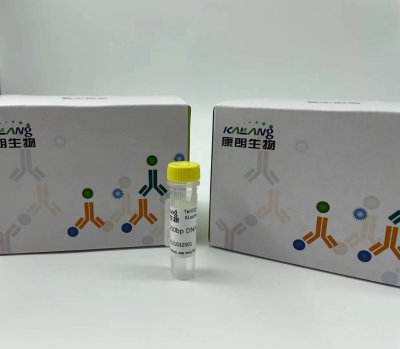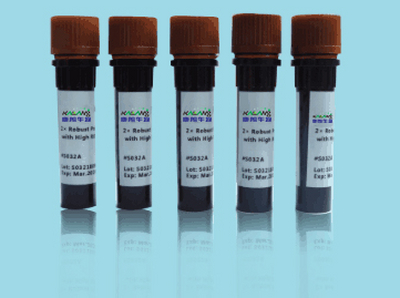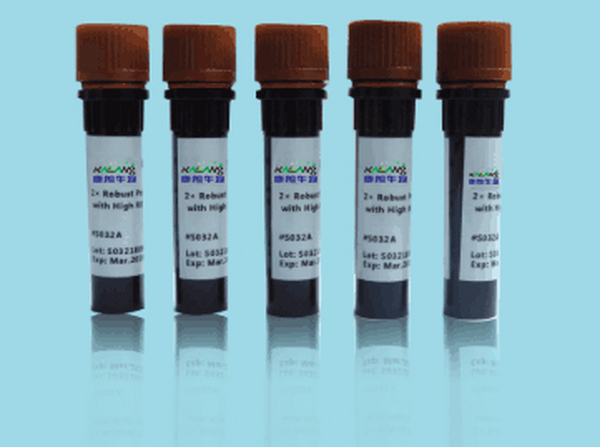QQ:3002763590


客服电话:021-61998208
Cystatin C rabbit Polyclonal Antibody
Cystatin C抗体
Cystatin C抗体应用:Western Blot: 1/500 - 1/2000. ELISA: 1/40000. cystatin C(CST3) Homo sapiens The cystatin superfamily encompasses proteins that contain multiple cystatin-like sequences. Some of the members are active cysteine protease inhibitors, while others have lost or perhaps never acquired this inhibitory activity. There are three inhibitory families in the superfamily, including the type 1 cystatins (stefins), type 2 cystatins and the kininogens. The type 2 cystatin proteins are a class of cysteine proteinase inhibitors found in a variety of human fluids and secretions, where they appear to provide protective functions. The cystatin locus on chromosome 20 contains the majority of the type 2 cystatin genes and pseudogenes. This gene is located in the cystatin locus and encodes the most abundant extracellular inhibitor of cysteine proteases, which is found in high concentrations in biological fluids and is expressed in virtually all organs of the body. A mutation in this gene has bee
Cystatin E/M rabbit Polyclonal Antibody
Cystatin E/M抗体
Cystatin E/M抗体应用:Immunohistochemistry: 1/100 - 1/300. ELISA: 1/40000. cystatin E/M(CST6) Homo sapiens The cystatin superfamily encompasses proteins that contain multiple cystatin-like sequences. Some of the members are active cysteine protease inhibitors, while others have lost or perhaps never acquired this inhibitory activity. There are three inhibitory families in the superfamily, including the type 1 cystatins (stefins), type 2 cystatins and the kininogens. The type 2 cystatin proteins are a class of cysteine proteinase inhibitors found in a variety of human fluids and secretions, where they appear to provide protective functions. This gene encodes a cystatin from the type 2 family, which is down-regulated in metastatic breast tumor cells as compared to primary tumor cells. Loss of expression is likely associated with the progression of a primary tumor to a metastatic phenotype. [provided by RefSeq, Jul 2008],
Cystatin L1 rabbit Polyclonal Antibody
Cystatin L1抗体
Cystatin L1抗体应用:Immunofluorescence: 1/200 - 1/1000. ELISA: 1/40000. cystatin like 1(CSTL1) Homo sapiens The cystatin superfamily encompasses proteins that contain multiple cystatin-like sequences. Some of the members are active cysteine protease inhibitors, while others have lost or perhaps never acquired this inhibitory activity. There are three inhibitory families in the superfamily, including the type 1 cystatins (stefins), type 2 cystatins and the kininogens. The type 2 cystatin proteins are a class of cysteine proteinase inhibitors found in a variety of human fluids and secretions. The cystatin locus on chromosome 20 contains the majority of the type 2 cystatin genes and pseudogenes. This gene is located at the telomeric end of the cystatin locus and encodes a type 2 cystatin-like protein. The specific function of this protein has not been determined. [provided by RefSeq, Jul 2008],
Cystatin SA rabbit Polyclonal Antibody
Cystatin SA抗体
Cystatin SA抗体应用:Immunohistochemistry: 1/100 - 1/300. ELISA: 1/40000. cystatin SA(CST2) Homo sapiens The cystatin superfamily encompasses proteins that contain multiple cystatin-like sequences. Some of the members are active cysteine protease inhibitors, while others have lost or perhaps never acquired this inhibitory activity. There are three inhibitory families in the superfamily, including the type 1 cystatins (stefins), type 2 cystatins and the kininogens. The type 2 cystatin proteins are a class of cysteine proteinase inhibitors found in a variety of human fluids and secretions, where they appear to provide protective functions. The cystatin locus on chromosome 20 contains the majority of the type 2 cystatin genes and pseudogenes. This gene is located in the cystatin locus and encodes a secreted thiol protease inhibitor found at high levels in saliva, tears and seminal plasma. [provided by RefSeq, Jul 2008],
Cystatin SN rabbit Polyclonal Antibody
Cystatin SN抗体
Cystatin SN抗体应用:Immunohistochemistry: 1/100 - 1/300. Immunofluorescence: 1/200 - 1/1000. ELISA: 1/20000. cystatin SN(CST1) Homo sapiens The cystatin superfamily encompasses proteins that contain multiple cystatin-like sequences. Some of the members are active cysteine protease inhibitors, while others have lost or perhaps never acquired this inhibitory activity. There are three inhibitory families in the superfamily, including the type 1 cystatins (stefins), type 2 cystatins and the kininogens. The type 2 cystatin proteins are a class of cysteine proteinase inhibitors found in a variety of human fluids and secretions, where they appear to provide protective functions. The cystatin locus on chromosome 20 contains the majority of the type 2 cystatin genes and pseudogenes. This gene is located in the cystatin locus and encodes a cysteine proteinase inhibitor found in saliva, tears, urine, and seminal fluid. [provided by RefSeq, Jul 2008],
CYTL1 rabbit Polyclonal Antibody
CYTL1抗体
CYTL1抗体应用:Western Blot: 1/500 - 1/2000. Immunohistochemistry: 1/100 - 1/300. ELISA: 1/40000. cytokine like 1(CYTL1) Homo sapiens C17 is a cytokine-like protein specifically expressed in bone marrow and cord blood mononuclear cells that bear the CD34 (MIM 142230) surface marker (Liu et al., 2000 [PubMed 10857752]).[supplied by OMIM, Mar 2008],
Cytochrome b rabbit Polyclonal Antibody
Cytochrome b抗体
Cytochrome b抗体应用:WB 1:500-2000, ELISA 1:10000-20000cofactor:Binds 2 heme groups non-covalently.,disease:Defects in MT-CYB are a rare cause of mitochondrial dysfunction underlying different myopathies. They include mitochondrial encephalomyopathy, hypertrophic cardiomyopathy (HCM), and sporadic mitochondrial myopathy (MM). In mitochondrial myopathy, exercise intolerance is the predominant symptom. Additional features include lactic acidosis, muscle weakness and/or myoglobinuria. Defects in MTCYB are also found in cases of exercise intolerance accompanied by deafness, mental retardation, retinitis pigmentosa, cataract, growth retardation, epilepsy (multisystem disorder).,disease:Defects in MT-CYB are the cause of cardiomyopathy infantile histiocytoid (CMIH) [MIM:500000]. CMIH is characterized by the presence of pale granular foamy histiocyte-like cells within the myocardium. It usually affects children younger than 2 years of age, with a clear predominance of females over males. Infants
Cytochrome b5 rabbit Polyclonal Antibody
Cytochrome b5抗体
Cytochrome b5抗体应用:Western Blot: 1/500 - 1/2000. Immunohistochemistry: 1/100 - 1/300. Immunofluorescence: 1/200 - 1/1000. ELISA: 1/5000. cytochrome b5 type A(CYB5A) Homo sapiens The protein encoded by this gene is a membrane-bound cytochrome that reduces ferric hemoglobin (methemoglobin) to ferrous hemoglobin, which is required for stearyl-CoA-desaturase activity. Defects in this gene are a cause of type IV hereditary methemoglobinemia. Three transcript variants encoding different isoforms have been found for this gene. [provided by RefSeq, Jun 2010],
Cytochrome c1 rabbit Polyclonal Antibody
Cytochrome c1抗体
Cytochrome c1抗体应用:Western Blot: 1/500 - 1/2000. ELISA: 1/20000. cytochrome c1(CYC1) Homo sapiens This gene encodes a subunit of the cytochrome bc1 complex, which plays an important role in the mitochondrial respiratory chain by transferring electrons from the Rieske iron-sulfur protein to cytochrome c. Mutations in this gene may cause mitochondrial complex III deficiency, nuclear type 6. [provided by RefSeq, Dec 2013],
Cytoglobin rabbit Polyclonal Antibody
Cytoglobin抗体
Cytoglobin抗体应用:IHC-p 1:50-200, ELISA 1:10000-20000cytoglobin(CYGB) Homo sapiens This gene encodes a globin protein found in vertebrate cells. The encoded protein is described as a hexacoordinate hemoglobin which binds ligand differently from the pentacoordinate hemoglobins involved in oxygen transport, and may be involved in protection during oxidative stress. This gene is located on chromosome 17 in the same region as a retinal gene which is mutated in progressive rod-cone degeneration, but in the opposite orientation. [provided by RefSeq, Jan 2012],
最新动态
-

Anti-GNGT1 KL20092-001(50ul)
2021-10-11 -

Anti-GNGT1 antibody(50ul) KL20093-001
2021-10-11 -

α-tubulin mouse Monoclonal Antibody
2021-01-08 -

α-tubulin mouse Monoclonal Antibody(8F11)
2021-01-08
热门标签
- Histone H3 rabbit Polyclonal Antibody Histone H3抗体
- EGFR rabbit Polyclonal Antibody EGFR抗体
- Cy3 Conjugated
- AbFluor™ 555 Conjugated
- AbFluor™ 680 Conjugated
- AbFluor™ 350 Conjugated
- AbFluor™ 647 Conjugated
- AbFluor™ 594 Conjugated
- AbFluor™ 405 Conjugated
- Cy5 Conjugated
- AbFluor™ 488 Conjugated
- Cyclophilin B抗体 Cyclophilin B Monoclonal Antibody(2B10)
- COX IV抗体 COX IV Monoclonal Antibody(6C8)
- PCNA抗体 PCNA Monoclonal Antibody(12D10)
- FAK rabbit Polyclonal Antibody FAK抗体
邮箱:3002763590@qq.com
电话:021-61998208

扫码关注微信公众号






